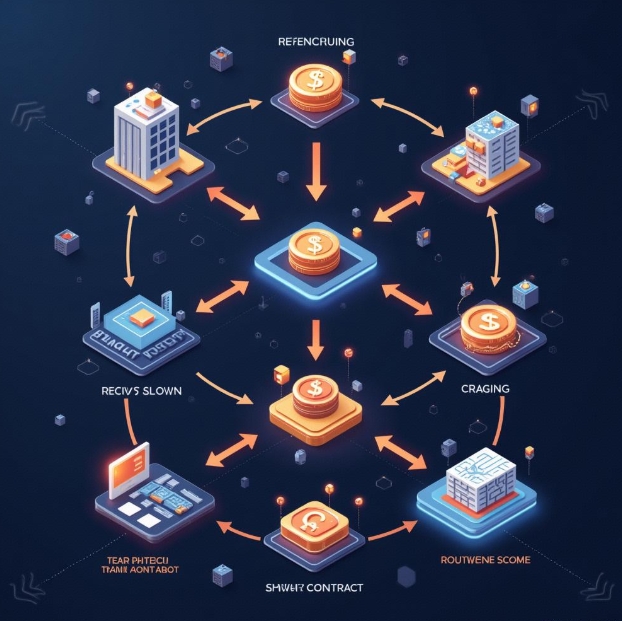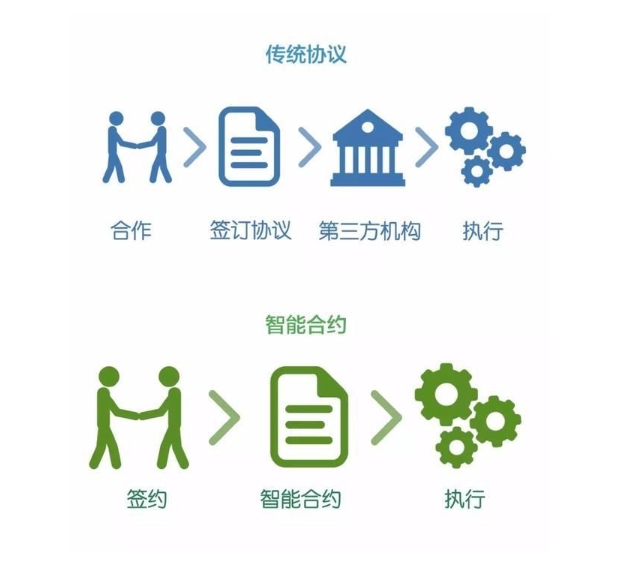From Theory to Practice: How to Build an Efficient and Secure Coin System
- latest articles
- 1.DApp Development & Customization: Merging Diverse Market Needs with User Experience 2.Analysis of the Core Technical System in DApp Project Development 3.How to achieve cross-chain interoperability in Web3 projects? 4.How does the tokenization of points reconstruct the e-commerce ecosystem? 5.How to Set and Track Data Metrics for a Points Mall? 6.What is DApp Development? Core Concepts and Technical Analysis 7.Inventory of commonly used Web3 development tools and usage tips 8.Development of a Distribution System Integrated with Social E-commerce 9.Six Key Steps for Businesses to Build a Points Mall System 10.What is DApp Development? A Comprehensive Guide from Concept to Implementation
- Popular Articles
- 1.Future Trends and Technology Predictions for APP Development in 2025 2.Analysis of the DeFi Ecosystem: How Developers Can Participate in Decentralized Finance Innovation 3.From Zero to One: How PI Mall Revolutionizes the Traditional E-commerce Model 4.DAPP Development | Best Practices for Professional Customization and Rapid Launch 5.Recommended by the Web3 developer community: the most noteworthy forums and resources 6.From Cloud Computing to Computing Power Leasing: Building a Flexible and Scalable Computing Resource Platform 7.How to Develop a Successful Douyin Mini Program: Technical Architecture and Best Practices 8.Shared Bike System APP: The Convenient Choice in the Era of Smart Travel 9.How to Create a Successful Dating App: From Needs Analysis to User Experience Design 10.From Design to Development: The Complete Process of Bringing an APP Idea to Life
As blockchain technology matures, digital currencies and decentralized finance (DeFi) are gradually becoming integral components of the global financial system. Within these emerging financial systems, the Token Distribution System plays a crucial role as one of the key technologies for the circulation and management of digital assets. An efficient and secure token distribution system not only optimizes the asset allocation process but also enhances the transparency and decentralization characteristics of blockchain projects.
Building a token distribution system involves multifaceted considerations, including but not limited to technical architecture, incentive mechanisms, transaction security, and compliance issues. From theory to practice, designing and implementing an efficient and secure token distribution system is a significant challenge faced by many blockchain projects and teams. This article will start from the theoretical foundations of token distribution systems, explore the technical details, design principles, and implementation strategies involved in their construction, and analyze the key elements for building a successful token distribution system.
I. Theoretical Foundations of Token Distribution Systems
The core function of a token distribution system is to achieve the allocation, management, and circulation of digital assets through smart contracts and decentralized mechanisms. Its design must not only consider how to effectively distribute currency or assets but also ensure the security, fairness, and auditability of the entire process.

1. Asset Allocation and Fairness
In any blockchain project, the method of asset allocation directly impacts the project's credibility and ecosystem development. A well-designed token distribution system must ensure the fairness of asset allocation, avoid unjust wealth concentration due to poor design, and ensure a balance of interests among different participants in the blockchain network.
Asset allocation is typically carried out through initial distribution, subsequent issuance, community rewards, etc. Each participant's contribution should be reasonably quantified and rewarded. For example, in DeFi protocols, the token distribution system may reward users based on factors such as their provided liquidity and transaction frequency.
2. Decentralization and Transparency
Decentralization is one of the core characteristics of blockchain, and the design of a token distribution system must align with this principle. A decentralized token distribution system can avoid issues such as single points of failure, power abuse, and lack of transparency associated with centralized management. Through smart contracts, the distribution process can be fully automated and publicly transparent, thereby enhancing participants' trust in the system.
3. Incentive Mechanisms and Economic Models
The design of a token distribution system is inseparable from incentive mechanisms. Reasonable incentive mechanisms can attract more participants to join and contribute their resources, such as capital, liquidity, and computing power. The incentive mechanisms in a token distribution system can be based on network effects, such as rewarding token holders, miners, or liquidity providers, thereby achieving consensus mechanisms and promoting the system's sustained growth.
The design of incentive mechanisms and economic models must balance inflation and deflation to ensure the long-term stability and healthy development of digital assets. Elements such as token distribution, voting rights, and reward cycles in the token distribution system need to be reasonably arranged to achieve long-term development.
II. Key Technologies for Building an Efficient and Secure Token Distribution System
Building an efficient and secure token distribution system requires not only a solid theoretical foundation but also advanced technological implementation. The following are some key technical points that help realize a token distribution system that is both efficient and secure.
1. Application of Smart Contracts
Smart contracts are one of the core tools of a token distribution system. They can automatically execute tasks such as asset allocation and reward distribution according to preset rules without third-party intervention. Through smart contracts, the token distribution system can ensure transparency while preventing human manipulation and errors.
Key technical points in smart contracts include:
Contract Auditing and Security: Once a smart contract is deployed on the blockchain, it cannot be altered. Therefore, strict security audits must be conducted before the contract goes live to avoid vulnerabilities or security risks.
Automated Execution and Trustworthiness: Smart contracts ensure automatic execution according to predetermined rules, and any participant can verify the transparency of the execution process.

2. Distributed Ledger and Decentralized Storage
To ensure the efficiency and security of a token distribution system, the application of Distributed Ledger Technology (DLT) throughout the system is crucial. Blockchain, as a typical DLT, ensures the immutability and transparency of data across the network.
Distributed ledgers not only ensure the integrity of transaction data but also enable the token distribution process to be fully decentralized, avoiding single points of failure. In a token distribution system, the ledger records all distribution details, and all participants can view their own asset allocation records.
Decentralized storage technologies, such as IPFS (InterPlanetary File System), can ensure the global storage and accessibility of files and data related to token distribution, enhancing data security and accessibility.
3. Encryption Technology and Transaction Security
To ensure the security of a token distribution system, encryption technology must be fully utilized. Foundational encryption technologies of blockchain, such as public-key cryptography, hash functions, and digital signatures, safeguard the security of transactions and asset transfers. Each participant's assets and transaction information are protected through encryption to prevent tampering or leakage.
Additionally, asset transfers in a token distribution system require multi-layered verification mechanisms to avoid security issues such as replay attacks and double-spending.
4. Selection of Consensus Mechanisms
Token distribution systems typically employ some form of consensus mechanism to ensure network stability and security. Common consensus mechanisms include Proof of Work (PoW), Proof of Stake (PoS), Delegated Proof of Stake (DPoS), etc.
The consensus mechanism determines how data is confirmed in the system and the efficiency of asset distribution. In a token distribution system, choosing the appropriate consensus mechanism is crucial as it directly relates to the reliability, speed, and decentralization characteristics of the distribution process.
III. Challenges and Solutions in Practice
Although theoretically building an efficient and secure token distribution system is not complex, in practice, many challenges are often encountered. The following are some common issues and their solutions.
1. Network Scalability Issues
As the application scope of token distribution systems expands, the frequency and complexity of processing transactions continue to increase. Traditional blockchain networks often face scalability issues, with low transaction throughput and long confirmation times.
Solutions:
Layer 2 Solutions: Such as State Channels and Sidechains, which reduce the burden on the main chain by processing some transactions off-chain.
Consensus Mechanism Optimization: Adopting efficient consensus mechanisms like Proof of Stake (PoS) or Byzantine Fault Tolerance (BFT) to improve system throughput and confirmation speed.
2. Security and Attack Prevention Mechanisms
Token distribution systems are prone to becoming targets of attacks, especially during the asset distribution process. If smart contracts contain vulnerabilities or are poorly designed, it could lead to loss or theft of assets.
Solutions:
Smart Contract Auditing: Regularly conduct code audits of smart contracts to ensure they are free of vulnerabilities.
Multi-signature and Secure Storage: For high-value distributions or storage, use multi-signature or cold wallet storage to reduce the risk of single-point attacks.
3. Regulatory and Compliance Issues
With the increasing adoption of blockchain technology, token distribution systems face growing compliance challenges. In many countries and regions, the distribution and trading of digital assets are strictly regulated, making it difficult to operate within a compliant framework.
Solutions:
Integration of Compliance Tools: Integrate compliance tools such as KYC (Know Your Customer) and AML (Anti-Money Laundering) mechanisms into the token distribution system to ensure user identity and transaction compliance.
Compliance Reporting and Auditing: Increase system credibility by providing regular audit reports and transparent distribution records.
IV. Conclusion
Building an efficient and secure token distribution system is not only a technical challenge but also a test of blockchain project governance and long-term sustainable development. From theory to practice, designing and implementing a fair and efficient token distribution system involves multiple aspects such as smart contracts, security mechanisms, incentive mechanisms, and decentralized storage. With continuous technological innovation and improvement, token distribution systems will play an increasingly important role in areas like decentralized finance and asset management.
As blockchain and decentralized technologies become more widespread, an increasing number of projects will adopt token distribution systems, driving changes in digital asset allocation methods and bringing fairer, more secure, and more efficient solutions to the global financial system.
-

How to achieve cross-chain interoperability in Web3 projects?
With the continuous development of WEB3 technology, Web3 has gradually become an···
-

Inventory of commonly used Web3 development tools and usage tips
With the continuous development of blockchain technology, Web3 has become a hot ···
-

Web3 development trend prediction: analysis of future technology directions and application scenarios
With the gradual development of blockchain technology, the concept of Web3 has m···

 Blockchain
Blockchain










